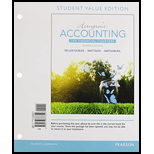
1)
Introduction:
Classes of shares:
• Shares provide partial ownership or a “share” of a corporation. There are two primary classes of shares – Equity Shares and Preference Shares.
• Equity shares are the class of shares which carry voting rights and equity share holders are the true owners of the company as in the event of dissolution, equity shareholders get last preference in clearing the amounts invested and there is no guarantee of profits will be debited by dividend on an annual basis.
• Preference shares are the class of shares which do not carry voting rights and in the event of dissolution, preference shareholders get first preference in clearing the amounts invested and there is usually guarantee of profits will be debited by dividend on an annual basis.Convertible Preference shares are preference shares that carry the option to be converted into equity shares after certain duration.
Journal Entries
- Journal entries are the first step in recording financial transactions and preparation of financial statements.
- These represent the impact of the financial transaction and demonstrate the effect on the accounts impacted in the form of debits and credits.
- Assets and expenses have debit balances and Liabilities and Incomes have credit balances and according to the business transaction, the accounts are appropriately debited will be credited by credited to reflect the effect of business transactions and events.
To Prepare:
Record of transactions in
2)
Introduction:
Statement of
• An essential element of the
• When shares are issued, the par value is recorded in the Paid in capital account and if shares are issued at a price greater than the par value, they are said to be issued at a premium. This premium on issue is recorded in the Excess of Paid in Capital over Par value account.
• Retained earnings are the balance of net income for the period after deduction of operating and revenue expenses.
To Prepare:
Statement of Stockholders equity
Want to see the full answer?
Check out a sample textbook solution
Chapter 13 Solutions
Horngren's Accounting, The Financial Chapters, Student Value Edition Plus MyLab Accounting with Pearson eText -- Access Card Package (11th Edition)
- What will the annual profit be if the company services 600 customers annually on these financial accounting question?arrow_forwardWhat is the estimated ending inventory on April 30 for this financial accounting question?arrow_forwardThe Tin company uses the straight-line method to depreciate its equipment. On May 1, 2018, the company purchased some equipment for $200,000. The equipment is estimated to have a useful life of ten years and a salvage value of $20,000. How much depreciation expense should Tin record for the equipment in the adjusting entry on December 31, 2018?arrow_forward
- When a company sells goods on credit, which accounts are affected?a) Accounts Receivable increases, Sales Revenue increasesb) Accounts Payable increases, Sales Revenue increasesc) Accounts Receivable increases, Cost of Goods Sold increasesd) Accounts Payable increases, Cost of Goods Sold increasesarrow_forwardA company has a total cost of $50.00 per unit at a volume of 100,000 units. The variable cost per unit is $20.00. What would the price be if the company expected a volume of 120,000 units and used a markup of50%?arrow_forwardWhat is the profit margin ratio of this financial accounting question? Please correct answerarrow_forward
- A company’s ability to pay its short-term obligations is assessed using which financial ratio?a) Debt-to-Equity Ratiob) Current Ratioc) Return on Equity (ROE)d) Gross Profit Marginarrow_forwardBeginning inventory was $4,000, purchases totaled $31,000, and sales were $20,000. What is the ending inventory?arrow_forwardGrant Industries had $200,000 in sales on account last year. The beginning accounts receivable balance was $15,000, and the ending accounts receivable balance was $18,000. What is the company's average collection period?arrow_forward
- Can you please solve this financial accounting issue?arrow_forward24. General Accounting Problem: The liabilities of Ula Company are $87,060. Also, common stock account is $145,800, dividends are $91,610, revenues are $443,250, and expenses are $316,360. What is the amount of Ula Company's total assets?arrow_forwardWhich financial statement provides an overview of a company’s changes in equity during a specific period?a) Income Statementb) Balance Sheetc) Cash Flow Statementd) Statement of Retainedarrow_forward

 AccountingAccountingISBN:9781337272094Author:WARREN, Carl S., Reeve, James M., Duchac, Jonathan E.Publisher:Cengage Learning,
AccountingAccountingISBN:9781337272094Author:WARREN, Carl S., Reeve, James M., Duchac, Jonathan E.Publisher:Cengage Learning, Accounting Information SystemsAccountingISBN:9781337619202Author:Hall, James A.Publisher:Cengage Learning,
Accounting Information SystemsAccountingISBN:9781337619202Author:Hall, James A.Publisher:Cengage Learning, Horngren's Cost Accounting: A Managerial Emphasis...AccountingISBN:9780134475585Author:Srikant M. Datar, Madhav V. RajanPublisher:PEARSON
Horngren's Cost Accounting: A Managerial Emphasis...AccountingISBN:9780134475585Author:Srikant M. Datar, Madhav V. RajanPublisher:PEARSON Intermediate AccountingAccountingISBN:9781259722660Author:J. David Spiceland, Mark W. Nelson, Wayne M ThomasPublisher:McGraw-Hill Education
Intermediate AccountingAccountingISBN:9781259722660Author:J. David Spiceland, Mark W. Nelson, Wayne M ThomasPublisher:McGraw-Hill Education Financial and Managerial AccountingAccountingISBN:9781259726705Author:John J Wild, Ken W. Shaw, Barbara Chiappetta Fundamental Accounting PrinciplesPublisher:McGraw-Hill Education
Financial and Managerial AccountingAccountingISBN:9781259726705Author:John J Wild, Ken W. Shaw, Barbara Chiappetta Fundamental Accounting PrinciplesPublisher:McGraw-Hill Education





